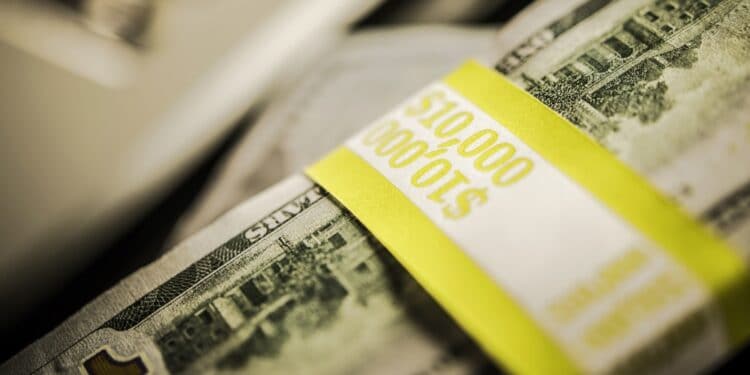A decade ago, no one could even dream about trading forex on their PCs or mobile devices. Now, everyone may take advantage of this lucrative work-from-home opportunity.
It’s possible, as it has been for an increasing number of people, that you can start earning money from home with just a $100 trading account. If you have to spend $100 to figure out whether FX trading can work for you, then that is certainly a reasonable amount to put on the line.
For one to succeed as a forex trader, they need to have a good understanding of the market, flow of relevant information, analysis skills, and access to up-to-date market information.
In case of our attempt to turn $100 into $1,000, you will need to know how to use leverage, when to use it and how to invest in a currency pair in the long run. There are several essential ones, but two stand out: using leverage and investing for the long run.
Using leverage
While the United States is one of the nations with restricted leverage, you can still access up to 50:1 for forex trades on major pairs. For the sake of our explanation, assume the trader is using a leverage ratio of 30:1, which is more than adequate for most forex day traders. With this, the trading capacity will have been multiplied thirty-fold. It means that he can take positions worth up to $3,000 with just $100 in his account, thanks to the use of leverage. Because the risk is still based on a $100 investment, the overall amount at stake is limited to a minimum.
If we use leverage on the GBPUSD pair, trading with 3,000 units would be the equivalent of $3,000. This means that every pip equals $0.30. At face value, it looks like a negligible amount, but it actually translates to a $30 profit if the market moves by 100 pips. This is equivalent to a 30% profit on the initial deposit of $100, thanks to using leverage.
You should, however, note that leverage can equally increase your losses as it can raise your profits. Therefore, you should be very careful. If you had traded with a 50:1 leverage on the trade above, a loss of 100 pips would translate to $50 or 50% of your capital in a single trade!
Using a lot of leverage is one of the primary reasons why so many forex traders end up losing money.
Turning the $100 into $1,000
We’ll use a 15:1 leverage ratio to show that trading long-term can transform $100 into $1,000 or more.
If your leverage is 50:1, then using 30% of your account balance as the margin is equivalent to using 15% of your account balance as leverage.
Start trading with $100, and you’ll have an initial trade size as below.
When trading with a leverage of 15:1, you can trade with as little as $100 and get as much as 1,500 units. However, if you use a leverage of 50:1 and trade with 30 percent of your total fund, your trade size would be equal to:
- $30 * 50 = 1,500 units (that is 30% of $100 using 50:1 leverage). In other words, using the leverage of 1:15 to trade a total of $100 equals the same transaction volume as using as of 50:1.
Trading 1,500 units with normal lot sizes may require the use of brokers who can facilitate this.
If we make, say, 10 pips a day, we’ll make 200 pips a month on average. Your total account balance will be around $130 at the end of the month.
- You get a profit of $0.15 per pip * 200 pips per month = $30
When evaluating available margin, forex brokers are required by law to take your unrealized profit into account. Then, after a month, you’ll have a $30 used margin, $70 non-used margin, and $30 non-attained profit.
When you trade with a broker, it appears as if you have 100 dollars in margin accessible to you. As a result, you have $70 in unutilized margin and $30 in unrealized profits. This suggests that there is room for additional trades.
If you start trading with only $100 and don’t have access to leverage, your trade volume will be minimal because you will only be using 30% of your no-gain profit for your next trade.
- $30*0.3=$9
- $9*50=450 units
If all you have is $30 in unrealized profit, then this is the situation you’d find yourself in. In other words, your next trade will only have $9 in margin.
However, because of the leverage, you’ll have 1,500 units for your first trade, which resulted in a 200-pip gain, and you’ve just added an additional 450 units for your second trade.
Despite the fact that it doesn’t seem like much, this means you’re seeing a 30% increase in your earnings each month. Using this method, you can go from $100 to just over $1000 in nine months.
From the discussion above, it is mathematically possible to turn a $100 investment in FX trading into $1000 in just nine months. However, the practicality of it may be a huge task because of the volatility of the FX market and the high risk taken by using leverage.
In summary
When you trade with discipline and only use a specific amount of money for a particular trade, you have already limited your risk to a significant degree. However, when you hope to use a small amount of capital like $100 discussed above to return high profit, you set yourself up for potentially cataclysmic losses. This is because such small capital makes you vulnerable to using excessively risky leverage, which could lead to massive losses in case things head south.
Therefore, it is not a good idea to be overambitious by opening up risky positions using small trading capital. The best way to go about it would be to adequately fund your account and only use leverage when absolutely necessary.




